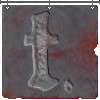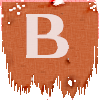You can see a weapon's damage type when you identify it.
Base damage types
Some skills perform better with certain weapon damage types, and some enemies are
resistant or vulnerable to certain damage types. If you choose not to wield a weapon,
your damage type will be type punch.
Damage types can be categorized into groups. The dtype groups are as follows:
Damage types can be categorized into groups. The dtype groups are as follows:
- Blunt group - punch, pound, crush
Blunt weapons deal extra damage to skeletal and/or mechanical creatures and double damage to crystalline creature. Rather than use blunt weapons, some warriors prefer to fight unarmed.
- Slash group - slice, slash
Slashing weapons do extra damage to plant creatures but less damage to blobs, mechanical and/or skeletal creatures.
- Pierce group - pierce, stab, sting
Piercing weapons deal less damage to plant and/or skeletal creatures. Stab attacks deal extra damage to mechanical creatures. Those without a NO_BS flag can be used to backstab. Shadow strike works best with a stabbing weapon.
- Whip group - whip, flail
You cannot parry while using these weapons, but your attacks also cannot be parried. Plant and mechanical creatures are resistant to whip attacks.
- Miscellaneous
Other damage types typically only seen from mobs, not weapons. A few have special rules. For example, a type stomp attack deals more damage to an opponent that is smaller than the attacker. A type bite attack can invoke the baleful effects of a 'foulblood' spell.
Extended damage types
Players will sometimes face opponents that are vulnerable to a particular
elemental or special damage type. A weapon can any number of extended damage
types. Magic and nonorm function simultaneously, but in the case of fire,
ice, zap, breath, poison and acid, only one will be used per attack, determined
randomly each time (with one exception, see Acid below). You can determine
which exclusive extended damage type is
in effect for each melee attack by the adjective used to describe it in the
damage send. For example, if you see this:
Your freezing slice *** DEMOLISHES *** a cityguard!
Your attack in this case would be type ice slice, or possibly magic ice slice or nonorm ice slice, depending on the weapon. Magic and nonorm do not invoke a special adjective.
'Flame blade' can add fire damage type to any slashing or stabbing weapon. Clerics using 'spirit hammer' can conjure a magical (or at higher levels, a nonorm) blunt weapon with any elemental damage type. Certain holy weapons can cover different damage type combinations, as well.
For more information about extended damage types and how they interact with saving
throws, please see our Saving Throws and Resistances article.
Your freezing slice *** DEMOLISHES *** a cityguard!
Your attack in this case would be type ice slice, or possibly magic ice slice or nonorm ice slice, depending on the weapon. Magic and nonorm do not invoke a special adjective.
'Flame blade' can add fire damage type to any slashing or stabbing weapon. Clerics using 'spirit hammer' can conjure a magical (or at higher levels, a nonorm) blunt weapon with any elemental damage type. Certain holy weapons can cover different damage type combinations, as well.
- Elementals - fire, ice, zap
Elemental weapons will strike ethereal creatures and are tested against their respective saving throw (saving fire, saving cold or saving zap). They also can heal enemies that are made of the same elemental. For example, a fire weapon can heal an fire elemental.
- Magic
A magical weapon will strike ethereal creatures and is tested against saving spell.
- Breath
A breath damage weapon is tested against saving breath. It can also damage an ethereal creature.
- Poison
A strike from a poisoned weapon is tested against poisonsave but has no effect on ethereal creatures. Furthermore, opponents are poisoned unless they are magical, undead or ethereal creatures, in which case they are only poisoned if the striking weapon is also magic or nonorm type.
- Acid
An acidic weapon attack is tested against saving normal, but it does not affect ethereal creatures. The acid damage type functions simultaneously with breath damage, so that a melee attack by an acid breath weapon will use both damage types.
- Nonorm
Saving normal is only half as effective against nonorm as it would be against a normal damage attack and affects ethereal creatures as if they were solid.










